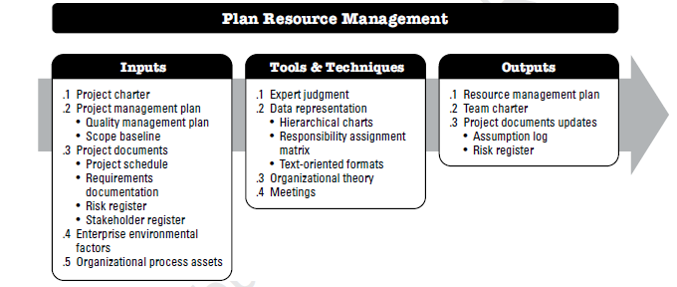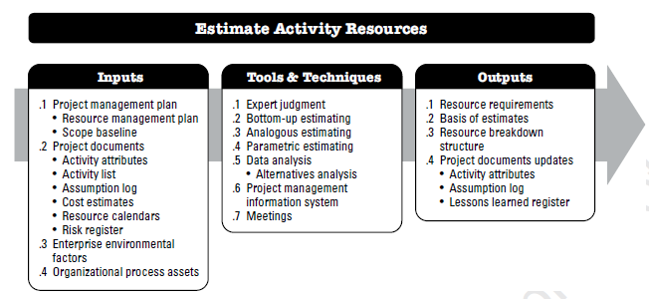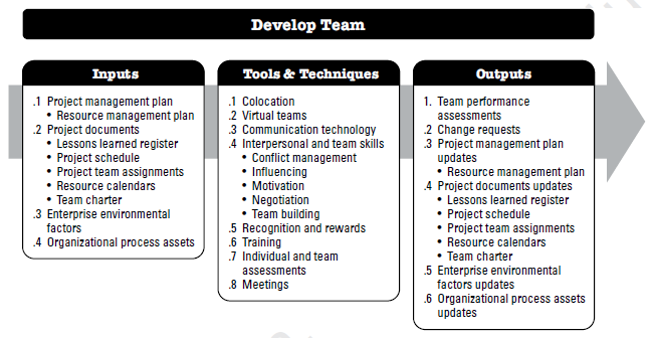
Project Resources Management important in project planning stage. A resource management team (or) the resposible project team is in charge of ensuring that the resources required for a project are obtained, accounted for, and utilized.
Resources is not only the manpower. its includes
All we know project management is not a automoted process. so each resources in controlled by a Project Management Officers.
A project management team (or) responsible person must ensure that there is enough money allocated for the required resources mentioned above. Additionally, the cost of each purchase must be accurately documented to ensure that the budget remains on track. As every project is different, so are the resources used to complete objectives.
Resource management is an important component of project management. It ensures that the project is executed according to the scope and overview determined in the planning phase. The resource management team or responsible person will helps in the development and management of the project team as well. As people comprise teams, resource management also involves establishing various roles and assignments throughout the project. Project Management person assign team roles, create time schedules and budgets, and keep records of important financial data. Those have to be documented properly for all the tasks.
The Project Resource Management processes are
Plan Resource Management – The process of defining how to estimate, acquire, manage and utilize physical and team resources.
Estimate Activity Resources – The process of estimating team resources and the type and quantities of material, equipment and supplies necessary to complete project work.
Acquire Resources - The process of obtaining team members, facilities, equipments, materials, supplies and other resources necessary to complete project work.
Develop Team - The process of improving competencies, team member interaction and the overall team environment to enhance project performance.
Manage Team - The process of tracking team member performance, providing feedback, resolving issues and managing team changes to optimize project performance.
Control Resources - The process of ensuring that the physical resources assigned and allocatd to the project are available as planned as well as monitoring the planned versun actual use of resources and performing corrective actions as necessary.
Key concepts:
1. Plan Resource Management
Plan Resource Management is the first and the initial step of the project resource management Knowledge Area. It involves various aspects like defining the process of estimating, acquiring, managing and using physical and human resources. This process is usually performed only once or at few predefined points throughout the project lifecycle to help in establishing the way of approach and level of management required for managing resources. These aspects are majorly influenced by the type and complexity of the project.
This process consists of various inputs, tools & techniques and outputs which I have listed down in the below table:

2. Estimate Activity Resources
Once you are done with planning, the next process is Estimate Activity Resources. In this process, the resources required for the project along with their type and quantity of tools, equipment, raw material, and supplies are being estimated. This process is generally executed after specific time intervals throughout the project lifecycle. With this, you can pinpoint the what type of resources you need, in what amounts and what should be their characteristics in order to finish the project successfully.
There are various inputs, tools & techniques and outputs involved in this process that I have listed in the below table:

3. Acquire Resources
Acquire Resources is the third process of project resource management Knowledge Area that deals with collecting the various human resources, facilities, tools and equipment, supplies and raw materials required to deliver the project. This process helps in outlining and guiding the selection process of the project resources and then assigning them to their specific activities/tasks. Thus, it is performed at periodic intervals throughout the project lifecycle and helps in preventing running out of resources.
This process consists of various inputs, tools & techniques and outputs which I have listed in the below table:

4. Develop Team
Next process of this Knowledge Area is to Develop Team. As the name suggests, this process purely concentrates on the development of team bonding and assigning them with rewarding work, future opportunities, and career development. It helps in enhancing the overall team performance by improving team members competencies, interactions, and the environment. This process is performed throughout the project lifecycle and intensifies teamwork, improves interpersonal skills of the individuals, motivates the team and reduces attrition.
Develop Team process involves various inputs, tools & techniques and outputs that I have listed in the below table:

5. Manage Team
Since the project team is acquired and developed, the next step is to manage them. In this process, each and every team members performance is monitored and tracked, their problem areas are identified and the issues are resolved and feedbacks are given in order to optimize the project performance. This process is generally performed throughout the project lifecycle and helps in influencing team behavior, managing the conflicts and resolving brewing issues.
In the below table I have listed down the various inputs, tools & techniques and outputs that are involved in this process:

6. Control Resources
Control Resources is the final process of the project resource management Knowledge Area. In this process, the project managers ensure that the resources that are assigned and allocated for the project activities are available, monitor their estimated usage vs actual usage and subsequently take corrective actions to keep the project on track. This process is implemented throughout the project lifecycle and helps in ensuring that the necessary project resources are deployed to the correct places at the correct time and are released when the project comes to an end.
This process consists of various inputs, tools & techniques and outputs which I have listed down in the below table:

Resource Management Benefits
To Learn Project Management Framework (or) to Clear the PMP Certification Exam, You can contacts ITechGurus